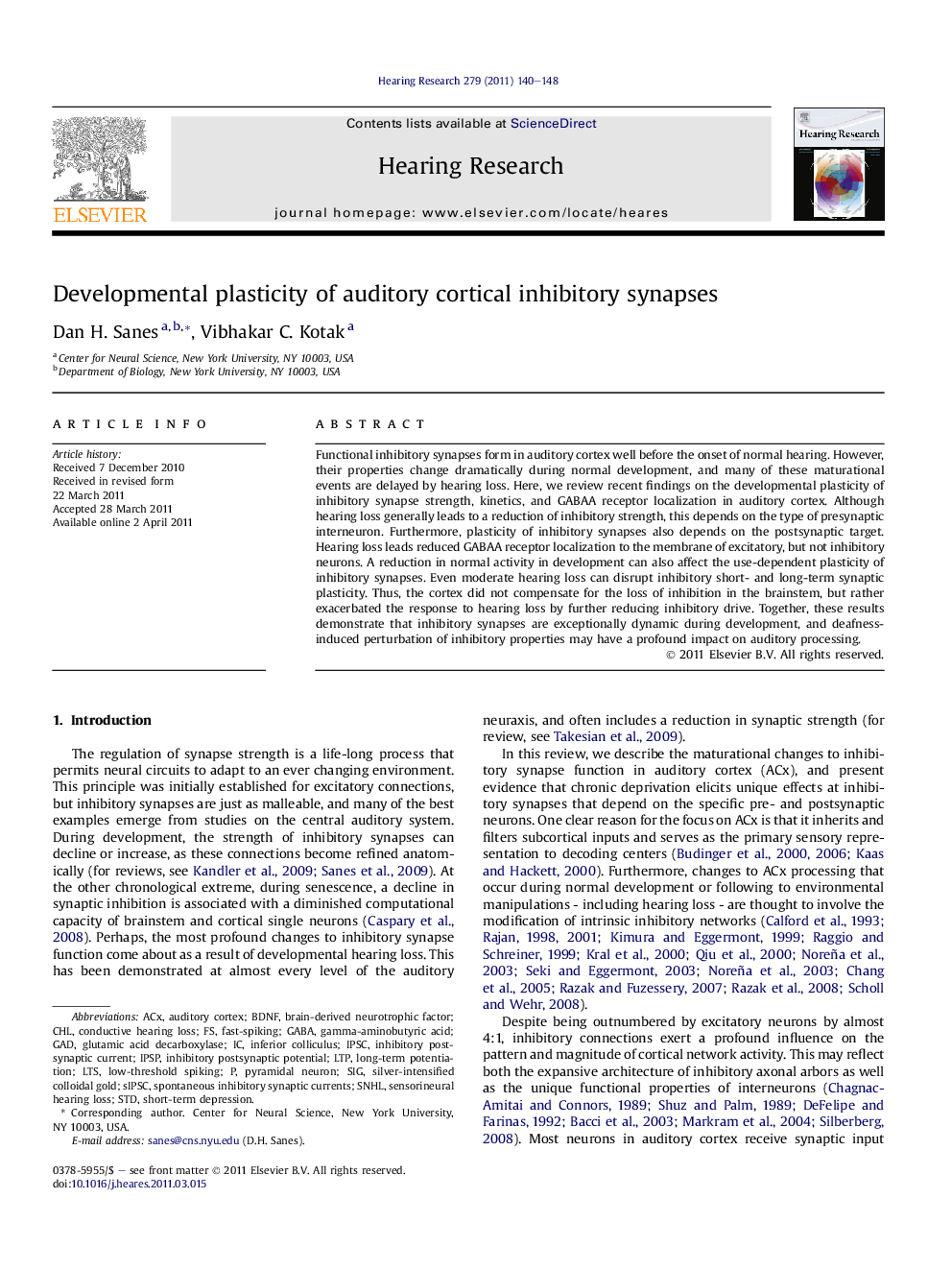| Article ID | Journal | Published Year | Pages | File Type |
|---|---|---|---|---|
| 4355507 | Hearing Research | 2011 | 9 Pages |
Functional inhibitory synapses form in auditory cortex well before the onset of normal hearing. However, their properties change dramatically during normal development, and many of these maturational events are delayed by hearing loss. Here, we review recent findings on the developmental plasticity of inhibitory synapse strength, kinetics, and GABAA receptor localization in auditory cortex. Although hearing loss generally leads to a reduction of inhibitory strength, this depends on the type of presynaptic interneuron. Furthermore, plasticity of inhibitory synapses also depends on the postsynaptic target. Hearing loss leads reduced GABAA receptor localization to the membrane of excitatory, but not inhibitory neurons. A reduction in normal activity in development can also affect the use-dependent plasticity of inhibitory synapses. Even moderate hearing loss can disrupt inhibitory short- and long-term synaptic plasticity. Thus, the cortex did not compensate for the loss of inhibition in the brainstem, but rather exacerbated the response to hearing loss by further reducing inhibitory drive. Together, these results demonstrate that inhibitory synapses are exceptionally dynamic during development, and deafness-induced perturbation of inhibitory properties may have a profound impact on auditory processing.
► Inhibitory gain decreases throughout the auditory CNS after hearing loss. ► Auditory cortex synapse function can be selectively assessed in the brain slice. ► Hearing loss leads to a delay in normal maturation of inhibitory function. ► Inhibitory dysfunction includes postsynaptic, presynaptic, and metaplastic changes. ► Auditory cortex does not compensate for the loss of inhibition in the brainstem.
